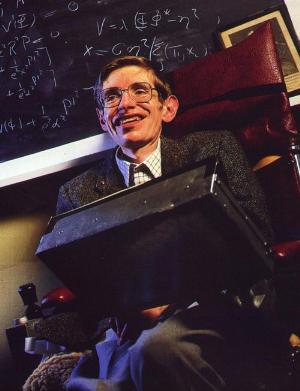Current Science Excludes Geocentrism Through Unproven Assumptionsby Mark WyattApril 10, 2008Astronomy has not disprovevn geocentrism. In fact astronomy has provided a lot of evidence that supports geocentrism. Cosmology has created models, based on many unproven assumptions, that would make the observations of astronomy reject geocentrism. But if we took alternate assumptions, then those same observations would support geocentrism. What are some of those assumptions (let's look at 3)? 1. Isotropy- the universe looks the same in any direction (and from any place) 2. Homogeneity- The make-up of the universe is more or less the same everywhere. Points 1 and 2 taken together are called the Cosmological Principle. Since it is a "principle", this means that pretty much all cosmologists, astronomers, etc. will make this assumption. Wikipedia simplifies that Cosmological Principle "on a large scale the universe is pretty much the same everywhere". What does Wikipedia call on for support? Observed isotropy of the cosmic microwave background radiation (CMB), combined with the Copernican principle And what is the Copernican "Principle"? (again from the Wikipedia article on the Copernican Principle) In cosmology, the Copernican principle, named after Nicolaus Copernicus, states the Earth is not in a central, specially favoured position. More recently, the principle is generalised to the simple statement that humans are not privileged observers. In this sense, it is equivalent to the mediocrity principle, with significant implications in the philosophy of science. Sounds a little circular to me! What does Stephen Hawking say about these principles (A Brief History of Time)? My emphasis: 
...all this evidence that the universe looks the same whichever direction we look in might seem to suggest there is something special about our place in the universe. In particular, it might seem that if we observe all other galaxies to be moving away from us, then we must be at the center of the universe. He does provide and alternative view, though: There is, however, an alternate explanation: the universe might look the same in every direction as seen from any other galaxy, too. This, as we have seen, was Friedmann’s second assumption. We have no scientific evidence for, or against, this assumption. We believe it only on grounds of modesty: it would be most remarkable if the universe looked the same in every direction around us, but not around other points in the universe. Let us continue on the assumptions. 3. The nature of redshift- two leading ones are expansion of the universe and gravitational interpretation. The big bang model of course chooses the first one. Interestingly, a top cosmologist named George Ellis created a model with earth at one of two centers. Paul Davies editor of Nature magazine commented on the results: 
Often the simplest of observations will have the most profound consequences. It has long been a cornerstone of modern science, to say nothing of man’s cosmic outlook, that the Earth attends a modest star that shines in an undistinguished part of a run-of-the-mill galaxy. Life arose spontaneously and man evolved on this miscellaneous clump of matter and now directs his own destiny without outside help. This cosmic model is supported by the Big-Bang and Expanding Universe concepts, which in turn are buttressed by the simple observation that astronomers see redshifts wherever they look. These redshifts are due, of course, to matter flying away from us under the impetus of the Big Bang. But redshifts can also arise from the gravitational attraction of mass. If the Earth were at the center of the universe, the attraction of the surrounding mass of stars would also produce redshifts wherever we looked! The argument advanced by George Ellis in this article is more complex than this, but his basic thrust is to put man back into a favored position in the cosmos. His new theory seems quite consistent with our astronomical observations, even though it clashes with the thought that we are godless and making it on our own. Let's see what George Ellis, himself said regarding his theory.
George Ellis, a famous cosmologist, in Scientific American, "Thinking Globally, Acting Universally", October 1995 People need to be aware that there is a range of models that could explain the observations,” Ellis argues. “For instance, I can construct you a spherically symmetrical universe with Earth at its center, and you cannot disprove it based on observations.” Ellis has published a paper on this. "You can only exclude it on philosophical grounds. In my view there is absolutely nothing wrong in that. What I want to bring into the open is the fact that we are using philosophical criteria in choosing our models. A lot of cosmology tries to hide that.” Interstingly enough, what do you think the title of Paul Davie's piece regarding George Ellis' model was? Interesting New Interpertation of Redshifts? No. Unique New Model Supports Earth's Centrality? No. It was titled: Cosmic Heresy? When Marcus Chown investigated the apparent alignement of the CMB and our ecliptic, what did he title his article? CMB aligned with Earth? No. Apparent Correlation of CMB and Solar System? No. He called it: Marcus Chown, What did Edwin Hubble write when he first discovered redshifts moving away from the earth everywhere he looked? Wow, look, we may be in the center? No. Hey we appear to have a central position, but maybe there are alternate explanations? No. 
He Said (The Observational Approach to Cosmology): …Such a condition would imply that we occupy a unique position in the universe, analogous, in a sense, to the ancient conception of a central Earth...This hypothesis cannot be disproved, but it is unwelcome and would only be accepted as a last resort in order to save the phenomena. Therefore we disregard this possibility.... the unwelcome position of a favored location must be avoided at all costs.... such a favored position is intolerable...Therefore, in order to restore homogeneity, and to escape the horror of a unique position…must be compensated by spatial curvature. There seems to be no other escape." You have to underatand the history behind many of the observations and their interpretations, especially the Hubble quote. Edwin Hubble resisted general relativity for a long time. He also initially resisted the interpretation of redshift as expansion (or velocity to be more general). Recall an alternate interpretation of redshift is gravitation (as discussed in the Paul Davies quote). What the Hubble quote implies is that rejecting general relativty (which allowed the "spatial curvature" and expansion) and redshift as expansion leads to an earth in a "unique position" (i.e., "centrally located"). an earth in a "unique position" is a "horror", "intolerable", etc., though "the hypothesis [of a unique position] cannot be disproved" (Davies and Hawking) and in fact "appears consistent with our astronomical observations" (Davies). So, rather than deal with an observationally (and also dynamically) viable option, so-called 'objective Science' chooses to "disregard this possibility". The point is that the cosmology which excludes geocentrism is creatd by choosing certain of all the assumptions that need to be made (and cannot be verified). Making other assumptions turn our observations into us being at or near the center. Galileo Was Wrong has quote after quote where scientist after scientist state explicitly that they wll disregard observations of centrality (or non-movement). Galileo Was Wrong also demonstrates that it is dyanmically and kinetically possible. |